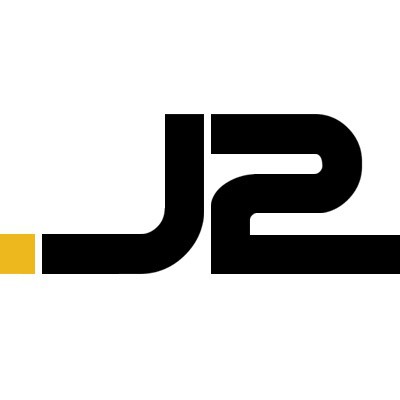 We continue to see an increasing number of signals that the HIE software vendor space is shifting. As data needs evolve, the challenge is to keep up with technology innovations while optimizing IT investments. In the last few years, a growing number of HIEs have consulted with J2 Interactive specifically about migrating to another HIE platform.
We continue to see an increasing number of signals that the HIE software vendor space is shifting. As data needs evolve, the challenge is to keep up with technology innovations while optimizing IT investments. In the last few years, a growing number of HIEs have consulted with J2 Interactive specifically about migrating to another HIE platform.
The reasons for these migrations vary – ranging from frustration with legacy systems that were cobbled together and are now fragile and difficult to customize, to parent companies changing their strategic focus and not investing enough to keep their HIE platform solutions as competitive and flexible as they need to be (e.g., providing support for evolving standards like FHIR R4).
Anyone working in the HIE space today knows that software solutions need to go beyond moving ADTs and C-CDAs around; they also need to be built by thought leaders who have a strong commitment to designing platforms with future data solutions in mind. Examples include elegantly handling integrated payer and pharmacy data, and capturing and deriving insights from social determinants of health. While there is still work to be done to get data where it needs to go, HIEs are quickly moving on to investing in solutions and talent to distill data into actionable and valuable insights. It’s not just about facilitating the exchange of data anymore; it’s increasingly about serving up only the most useful data and actionable knowledge that is gleaned from it.
If you are among the growing number of HIEs actively considering a platform change, we have borrowed from our experience supporting multiple successful migrations to produce a list of “lessons learned” to help you in your evaluation.
Increase Migration Effectiveness and Efficiency
1. Make sure you have a plan for ROI. Your return can come in the form of relying more on your existing staff and less on professional services from vendors, savings from moving to a cloud-based environment, new revenue opportunities that come with a more sophisticated platform, or some other combination of labor, technology, and maintenance cost savings.
2. Early in the process, begin developing a sustainability plan to ensure your own staff receive the training, mentoring, and resources needed to support ongoing enhancements and fine-tuning of your new platform. Make self-sufficiency a major and highly visible goal from start to finish and define when an appropriate hand-off should occur (and how you’ll know your team is ready for that hand-off).
3. Work with your current platform vendor as early as possible to share your plans to move to another platform. Bringing them in early in the process can help to reduce delays and inefficiencies.
4. Determine upfront whether you expect to do an historical data load or “start new” from the point of cut-over. This might mean investing additional time in your discovery phase to understand what specific data will transfer most easily from your current platform to the new one. If you decide to load historical data, determine how far back you need or want to go. Depending on how long you’ve been operating, the size of your HIE, and the quality of historical data, there could be additional time and costs associated with preparing, managing, and validating the historical data migration and this should be factored into your migration budget to manage expectations with stakeholders.
5. Ensure that you have a clear communication plan in place before starting your migration, which includes roles and responsibilities for each of your participants, member organizations, and other external resources. Effectively communicating plans, progress, and validation results post-migration is essential to managing stakeholder perceptions of the value and success of your migration.
6. Have a plan for frequent internal migration team communications, such as daily standups. If you do not currently use structured change management methodologies, it is worth bringing this kind of organized approach to your project. The greater the clarity and the more regularly team members actively engage in effective information sharing, the more successful your migration is likely to be.
7. You should have a dedicated project manager, whether provided by your vendor or your own, and that person should be prepared to produce regular progress, risk, issue, and budget status reports, whether as one summary report or individually, depending on your preferences. These should be distributed to key stakeholders at least weekly throughout your migration project. If your vendor provides the PM, be clear from the outset about your expectations for the kinds of updates you will receive throughout the engagement.
8. Work with your project manager to define and document roles and responsibilities of third-party vendors before the migration begins. Assuming that certain vendors’ interests, schedules, and resource availability will coincide with your plans is risky.
9. Consider partnering with an implementation partner recommended by the platform vendor you’re moving to with experience performing similar migrations. Vet those recommended partners and ask for references before you agree to hire them to lead your project.
10. As you evaluate vendor solutions, make sure you consider the long-term adaptability of the company and its solution. Making a short-term decision based purely on a factor like cost or a promise from a vendor to stand up your solution faster than the others could lead to having to make yet another platform migration decision in just a few short years.
Your migration to a new HIE platform is a critical move to ensuring your HIE’s flexibility and capacity to move with the market and develop innovative solutions for your patients, providers, and payers. As you go through the process of evaluating migration options, know that you’re in good company. J2 has helped a few prominent HIEs recently to make the switch to invest in long-term sustainability, including Manifest MedEx and Greater Houston Healthconnect.
About J2 Interactive
 J2 Interactive is an award-winning software development and IT consulting firm specializing in customized solutions for hospitals, labs, research institutions, and health information exchanges.
J2 Interactive is an award-winning software development and IT consulting firm specializing in customized solutions for hospitals, labs, research institutions, and health information exchanges.
Our approach to design and development is rooted in a fundamental belief that systems succeed or fail based on how well they serve the people who depend upon them.



